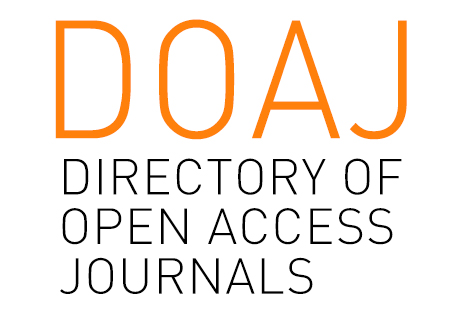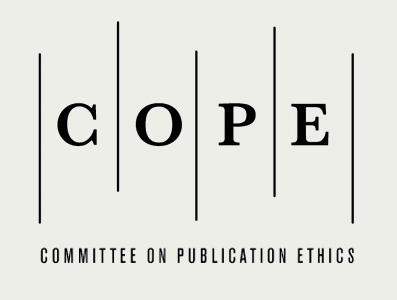Нова схватања природе и развоја ликовног израза деце
Вера Д. Вечански, Универзитет у Београду, Факултет за образовање учитеља и васпитача, Београд, Србија, имејл: vera.vecanski@uf.bg.ac.rs
Иновације у настави, XXXVIII, 2025/3, стр. 1–17
| PDF | | Extended summary PDF |
DOI: 10.5937/inovacije2503001V
Резиме: Начин на који се разумеју природа и развој дечјег ликовног израза (у даљем тексту: ДЛИ) непосредно утиче на планирање и реализацију ликовних активности у вртићима и школама. Осим традиционалних теорија развоја ДЛИ из прве половине 20. века, постоје и савремене теорије које су у складу са савременим друштвено-уметничким контекстом, али прве и даље доминирају и утичу и данас на приступе васпитача и учитеља ликовним активностима. У овом раду се кроз теоријску анализу упоређују и преиспитују обе групе теорија у контексту савременог васпитања и образовања. Циљ рада је да укаже на ограничења традиционалних теорија у препознавању разноликости и културне специфичности ДЛИ и да истакне негативне последице њихове доминације у пракси, будући да оне доводе до неадекватних приступа поучавању у области ликовних и визуелних уметности, што резултира дискриминацијом природних начина ДЛИ и отуђења деце од уметности. Анализа показује да традиционалне теорије не обухватају све облике изражавања које деца практикују, а да их савремене теорије препознају. Стога рад настоји да афирмише значај савремених теорија које би оснаживале и обучавале васпитаче и учитеље у развијању приступа који подстичу индивидуалне, културно условљене и комуникацијске начине ДЛИ. Због тога је неопходно да улога васпитача и учитеља буде усклађена са савременим теоријама развоја ДЛИ, а да они буду обучени да користе различите приступе поучавања који подстичу разноврсност и специфичне начине ликовног изражавања деце.
Кључне речи: дечји ликовни израз (ДЛИ), традиционалне и савремене теорије развоја ДЛИ, сликовни жанр, ликовне активности у вртићу и школи, улога васпитача и учитеља
Summary: The way in which nature and development of children’s artistic expression (CAE) are understood directly impacts the planning and implementation of the visual arts activities in kindergartens and schools. Apart from traditional theories of CAE development from the first half of the 20th century, there are also contemporary theories that are in line with the contemporary socio-artistic context, but the former still dominate and influence the approaches of the preschool and primary school teachers to visual arts activities. Using theoretical analysis, this paper compares and re-examines both groups of theories in the context of contemporary education. The aim of the paper is to point out the limitations of the traditional theories in recognizing the diversity and cultural specificity of CAE and to highlight the negative consequences of their dominance in practice, as they entail inadequate approaches to teaching in the field of fine and visual arts, which results in discrimination against the natural ways of CAE and alienation of children from art. The analysis shows that traditional theories do not encompass all forms of expression practiced by children, while contemporary theories include them. For this reason, the paper seeks to affirm the importance of the contemporary theories that would empower and train preschool and primary school teachers to develop approaches that encourage individual, culturally conditioned, and communicative ways of expressing children’s artistic expression. Therefore, it is necessary that the role of preschool and primary school teachers be aligned with contemporary theories of the development of children’s artistic expression, and that they should be trained to use different teaching approaches that encourage diversity and specific ways of children’s artistic expression.
Keywords: children’s artistic expression (CAE), traditional and contemporary theories of the development of CAE, fine arts genre, fine arts activities in kindergarten and school, the role of preschool and primary school teachers.
Литература:
- Anderson, T. & Milbrandt, M. (1998). Authentic Instruction in Art: Why and How to Dump the School Art Style. Visual Arts Research, 24(1), 13–20.
- rnhajm, R. (1971). Umetnost i vizuelno opažanje. Umetnička akademija u Beogradu.
- tkinson, D. (1993). Representation and Experience in Children’s Drawing. Journal of Art & Design Education, 12, 85–104. https://doi.org/10.1111/j.1476-8070.1993.tb00576.x
- elting, H. (1987). The End of the History of Art? In The End of the History of Art? Chicago University Press.
- enjamin, V. (1974). Umetničko delo u veku svoje tehničke reprodukcije: Eseji. Nolit.
- resler, L. (1993). Three orientations to art in the primary grades: Implications for curriculum reform. Arts Education Policy Review, 94(6), 29–34. https://doi.org/10.1080/10632913.1993.9936939
- Bourriaud, N. (2002). Relational Aesthetics. Les Presses du réel.
- Danto, A. C. (1984). The End of Art. In B. Lang (Ed.). The Death of Art (pp. 5–35). Haven Publications.
- Darwin, Ch. (1859). On the origin of species by means of natural selection, or preservation of favoured races in the struggle for life. John Murray.
- Duncum, P. (1999). A Multiple Pathways/Multiple Endpoints Model of Graphic Development. Visual Arts Research, 25(2), 38–47.
- Efland, A. (1976). The School Art Style: A Functional Analysis. Studies in Art Education, 17(2), 37–44.
- Efland, A. (1990). A History of Art Education: Intellectual and Social Currents in Teaching the Visual Arts. Teachers College, Columbia University.
- Eisner, E. W. (2002). The Arts and the Creation of Mind. Yale University Press.
- Eisner, E. W. (1997). Cognition And Representation: A way to pursue the American dream. Phi Delta Kappan, 78(5), 348–353.
- Fairclough, N. (1992). Discourse and Social Change. Polite Press.
- Filipović, S. (2009). Razvoj shvatanja o dečjem likovnom stvaralaštvu i mogućnostima vaspitno-obrazovnog delovanja na njega (doktorska disertacija). Akademija umjetnosti, Univerzitet u Banjoj Luci.
- Fuko, M. (2017). Poredak diskursa. Karpos.
- Golomb, C. (1974). Young Children’s Sculpture and Drawing: A Study in Representational Development. Harvard University Press.
- Golomb, C. (1994). Drawing as Representation: The Child’s Acquisition of a Meaningful Graphic Language. Visual Arts Research, 20(2), 14–28.
- Golomb, C. (1997). Representational concepts in clay: The development of sculpture. In A. M. Kindler (Ed.). Child development in art (pp. 131–141). NAEA Monograph Series.
- Golomb, C. (2002). Child art in context: A cultural and comparative perspective. American Psychological Association.
- Golomb, C. (2004). Sculpture: Representational development in a three-dimensional medium. In E. Eisner, & M. Day (Eds.). Handbook of research and policy in art education (pp. 329–358). Lawrence Erlbaum.
- Golomb, C. (2007). Representational conceptions in two-and three-dimensional media: A developmental perspective. Psychology of Aesthetics, Creativity, and the Arts, 1(1), 32–39.
- Golomb, C., & Mc Cormick, M. (1995). Sculpture: The development of three-dimensional representation in clay. Visual Arts Research, 21, 35–50.
- Grgurić, N., i Jakubin, M. (1996). Razvoj likovnog izražavanja i stvaranja u djece. U N. Grgurić, i M. Jakubin (ur.). Vizualno-likovni odgoj i obrazovanje, 27–68. Eduka.
- Hadži-Jovančić, N. (2012): Umetnost u opštem obrazovanju: Funkcije i pristupi nastavi. Učiteljski fakultet – Klett.
- Huzjak, M. (2013). Analytical Observation Method in the Development of Children’s Drawings. Croatian Journal of Education, 15(1), 81–98.
- Jolley, R. P. (2010). Children and pictures: Drawing and understanding. Wiley-Blackwell.
- Kamenov, E., i Filipović, S. (2009). Mudrost čula 3. deo – Dečje likovno stvaralaštvo. Dragon.
- Kellogg, R. (1970). Analyzing children’s art. Mayfield Publishing.
- Kindler, A. M., & Darras, B. (1994). Artistic Development in Context: Emergence and Development of Pictorial Imagery in the Early Childhood Years. Visual Arts Research, 20(2), 1–13.
- Kindler, A. M., & Darras, B. (1997). Map of Artistic Development. In Kindler. A. (Ed.). Child Development in Art (pp. 17–44). NAEA.
- Kindler, A. M. (1999). “From endpoints to repertoires”: A challenge to art education. Studies in Art Education, 40(4), 330–349.
- Knežević, B. (2017). S.U. Virtuelni umetnički identitet i njegovi realni učinci u kulturi (doktorski umetnički projekat). Univerzitet umetnosti.
- Korać, I. (2017). Podsticanje dečjeg likovnog stvaralaštva u vaspitno-obrazovnom kontekstu. Godišnjak Pedagoškog fakulteta u Vranju, 8(1), 349–357.
- Korzenik, D. (1981). Is Children’s Work Art? Some Historical Views. Art Education, 34(5), 20–24.
- Lähdesmäki, T., Baranova, J., Ylönen, S., Koistinen, A. K., Mäkinen, K., Juškiene, V., & Zaleskine, I. (2022). Learning cultural literacy through creative practices in schools. Palgrave Macmillan.
- Lowenfeld, V. (1047). Creative and mental growth. MacMillan.
- Luquet, G. H. (2001). Children’s Drawings. Free Association Books.
- Maravić, M. (2014). Socijalne konstrukcije pojma dečje umetnosti. Zbornik Instituta za pedagoška istraživanja, 46(2), 385–398. https://doi.org/10.2298/ZIPI1402385M
- Matthews, J. (1984). Children drawing: Are young children really scribbling? Early Child Development and Care, 18, 1–39.
- Matthews, Ј. (1994). Deep Structures in Children’s Art: Development and Culture. Visual Arts Research, 20(2), 29–50.
- Matthews, Ј. (1997). How children learn to draw the human figure: Studies from Singapore. European Early Childhood Education Research Journal, 5(1), 29–58. https://doi.org/10.1080/13502939785207991
- Matthews, Ј. (2001). Children Drawing Attention: Studies from Singapore. Visual Arts Research, 27(1), 13–45.
- Matthews, J. (2003). Drawing and Painting: Children and Visual Representation. Paul Chapman Publishing.
- Mejson, E. (2009). Istorija zapadne umetnosti. Vulkan izdavaštvo – Alnari.
- Morra, S., & Panesi, S. (2017). From scribbling to drawing: the role of working memory. Cognitive development, 43, 142–158. https://doi.org/10.1016/j.cogdev.2017.03.001
- Parsons, M. J. (2003). Endpoints, repertoires, and toolboxes: Development in art as the acquisition of tools. The International Journal of Arts Education, 1(1), 67–82.
- Piaget, J., & Inhelder, B. (1948). The Child’s Conception of Space. Routledge & Kegan Paul.
- Quaglia, R., Longobardio, C., Iotti, N. O., & Prino, L. E. (2015). A new theory on children’s drawings: Analyzing the role of emotion and movement in graphical development. Infant Behavior & Development, 39, 81–91. https://doi.org/10.1016/j.infbeh.2015.02.009
- Smith, N. (1983). Do Children Draw from Observation? Art Education, 36(5), 22–25.
- Smith, N. et al. (1998). Observation Drawing with Children. Teachers College Press.
- Stanković, M. (2014). Participativne prakse u srpskoj savremenoj umetnosti. Kultura, 143, 297–318. https://doi.org/10.5937/kultura1443297s
- Thompson, C. M. (2012). Repositioning the Visual Arts in Early Childhood Education from. In O. N. Saracho, & B. Spodek (Eds.). Handbook of Research on the Education of Young Children (pp. 219–240). Routledge.
- Weitz, М. (1956). The Role of Theory in Aesthetics. The Journal of Aesthetics and Art Criticism, 15(1), 27–35.
- Wilson, B. (2004). Child art after modernism: Visual culture and new narratives. In E. W. Eisner, & M. D. Day (Eds.). Handbook of Research and Policy in Art Education (pp. 299–328). Lawrence Erlbaum Associates.
- Wilson, B., & Wilson, M. (1981). As I see it: The Use and Uselessness of Developmental Stages. Art Education, 34(5), 4–5.
- Wolf, D. P., & Perry, M. D. (1988). From Endpoints to Repertoires: Some New Conclusions about Drawing Development. Journal of Aesthetic Education, 22(1), 17–34.
- Wolf, D. P. (1994). Development as the growth of repertoires. In M. B. Franklin, & B. Kaplan (Eds.). Development and the arts (pp. 59–78). Lawrence Erlbaum.
- Wright, S. (2002). Young Children, and Learning. Allyn & Bacon.
- Večanski Nikolić, V. (2015). Razvojni potencijal i modaliteti korišćenja ručno izrađenih igračaka na predškolskom uzrastu (doktorska disertacija). Učiteljski fakultet Univerziteta u Beogradu.
- Večanski, V. (2012). Savremene tehnologije kao izvor novih mogućnosti u nastavi likovne kulture. Inovacije u nastavi, 25(3), 87–100.
- Večanski, V. (2020). Proizvođenje artefakata ili istraživanje – kako razumemo likovne aktivnosti u vrtiću? U Z. Opačić i G. Zeljić (ur.). Programske (re)forme u obrazovanju i vaspitanju – izazovi i perspektive, Zbornik radova sa međunarodnog naučnog skupa. Beograd: Univerzitet u Beogradu, Učiteljski fakultet, str. 487–504.
- Vojvodić, M. (2018). Kompetencije nastavnika kao faktor razvoja likovnog stvaralaštva učenika osnovnoškolskog uzrasta (doktorska disertacija). Novi Sad: Filozofski fakultet, Univerzitet u Novom Sadu.
- Vygotsky, L. S. (1978). Mind in a Society. Cambridge, MA: Harvard University Press.
Copyright © 2025 by the publisher Faculty of Education, University of Belgrade, SERBIA. This is an open access article distributed under the terms of the Creative Commons Attribution License (CC BY 4.0) (https://creativecommons.org/licenses/by/4.0/), which permits unrestricted use, distribution, and reproduction in any medium, provided the original paper is accurately cited.





